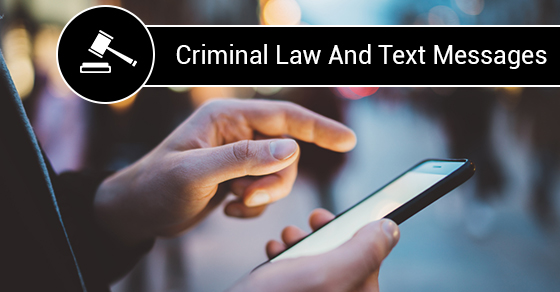Criminal Law and Technology- Text Messages

If someone sends you a text message, is that hearsay? Can an incoming text message be used against you?
R v. Bridgman, 2017 ONCA 940, a recent decision by the Court of Appeal, has further clarified the law with respect to the admissibility of incoming text messages. During the execution of a search warrant, the appellant’s cell phone was seized and extracted, producing text messages that were said to be related to drug trafficking.
At the trial level, the analysis of the admissibility of the incoming text messages focused largely on the principled exception to the hearsay rule – that if a statement is both necessary and reliable, it should be admitted, even if it is hearsay. The trial judge was satisfied of the threshold criteria of necessity and reliability and admitted the text messages into evidence as hearsay statements. The trial judge further ruled that the text messages were highly probative and had no prejudicial effect. The jury used the text messages for the truth of their contents and ultimately found the appellant guilty. The appellant appealed the conviction.
The issues for the Court of Appeal were whether the text messages were properly admitted into evidence and properly utilized by the jury. In a decision written by Justice Fairburn, the Court of Appeal answered both of these questions in the affirmative and dismissed the appeal.
The Court ruled that there was no error in the approach to the principled exception to the hearsay rule as:
- Although after-the-fact articulation of the purpose for which evidence is to be used is not to be encouraged, in this case it did not result in prejudice as the appellant’s evidence and defence were unaffected;
- The test for threshold reliability was met as the text messages were numerous, clear and open to little interpretation. There was considerable evidence that the incoming text messages were directed to the appellant as it was his phone, in his possession and in one case, addressed to him;
- The test for threshold necessity was met as there is no strict requirement that the police track down declarants and regardless, in this case the trial judge heard evidence explaining why the police did not take steps to locate the numerous declarants.
The Crown’s argument for admission was grounded in a different exception to the hearsay rule, the documents in possession rule. The Crown argued that the appellant “adopted” or impliedly assented to the truth of the assertions of the incoming text messages when they laid on the phone in his possession and when he is said to have responded. Although the jury did not decide on the merits of this argument, Justice Fairburn discussed the limits of adoption and the documents in possession rule:
“An accused should not be rendered vulnerable to the whims of others and messages they may send by way of electronic communication. It cannot be that the mere act of receiving a message on one’s electronic device constitutes the act of adoption, thereby transforming the statement into an adoptive admission” (para 88).
The takeaway from the Bridgman case is that if incoming text messages satisfy the principled exception to the hearsay rule or the documents in possession rule, they may be admitted into evidence even if they are hearsay and presumptively inadmissible. However, this was a case where there was “ample evidence” and “repeated patterns of requests for different types of drugs”. Defence lawyers can continue to rely upon the inherent dangers of hearsay evidence and Justice Fairburn’s comments with respect to the vulnerabilities of the accused in the realm of electronic communication.

